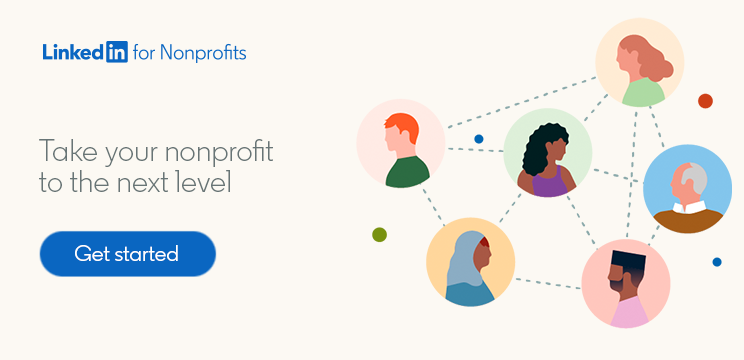
How Nonprofits Can Leverage Digital Tools to Build Community
Over the past decade, the nonprofit world has undergone a tremendous digital transformation. While this shift presents incredible opportunities for nonprofits to steward donors, reach new audiences, and open channels for fundraising, creating an online presence for your organization comes with new, exciting challenges.
In my experience growing three nonprofits and creating a digital online fundraising platform, I’ve seen both the benefits and pitfalls nonprofits can face online. Here’s what I’ve found works for nonprofits as they leverage digital tools to advance their operations and create an engaged community in the process.
Create content that provides value for your target demographic
As you begin to build your online presence, it can be tempting to repeatedly tell your story at length. But when it comes to finding people who connect with your mission and believe in your solutions, social media’s bite-sized morsels of content are an ideal starting point. To develop a super engaged audience, you’ve got to gain your followers’ trust, which means focusing first on becoming an authoritative voice in your field. When people trust your message, it feels natural for them to participate and support your overarching goals.
As you create your content, it’s imperative that you stay true to your ethical boundaries, like developing a strict permissions protocol when sharing photos of the communities you’re helping. For example, at Liberty in North Korea (LiNK), we grappled with North Korean laws that resulted in the persecution of the family members of those we helped, so maintaining privacy wasn’t just a question of respect, it was an urgent matter of safety.
Openly communicating with a high level of transparency and integrity highlights your organization’s authenticity and shows that you’re truly living by your values — and take it from me, there’s nothing that draws supporters in like a living example of change.
Cultivate an audience of advocates
Creating a loyal following isn’t easy, but once you have one, it can help your mission in many ways. Case in point: unruly online trolls.
Managing negative comments on social media is stressful, no matter how big your team is. And while you may have employees regularly monitoring the comments section for rude remarks, relying on your team alone can diminish the authenticity of your nonprofit’s social presence. Like, why is no one standing up for you?
A more effective, organic approach to fighting online trolls comes not from your team, but from your followers. Engaged online community members will be quick to defend your mission and post supportive comments that counter any discouraging chatter — freeing up your team’s time and energy and strengthening your online reputation.
Meet donors where they’re at
For an effective digital fundraising campaign, taking an omnichannel approach as you develop your strategy can really pay off in the long run. What does that mean? Instead of laser focusing your efforts in one place, the digital world allows for more decentralization, which means… donors can engage with your organization in all kinds of ways!
To max out benefits, set up donor portals through social media, landing pages, or newsletters — or, ideally, all of the above. Once you have these channels set up, don’t drag donors out of the channel they have a strong connection with; rather, cultivate those donor bonds right where you found them. For instance, if someone discovers your cause on LinkedIn, allow that relationship to grow there, instead of asking for an email address so you can send a newsletter (that they’ll never read.) If you know they already use LinkedIn on a regular basis, you’re more likely to grow a thriving relationship there than in their inbox.
Use social media to showcase your nonprofit’s culture
Potential and existing donors aren’t the only ones taking notice of your content. Social platforms offer great ways to highlight your organizational culture in addition to your mission, attracting the cream of the applicant crop. In today’s job market, it’s important that employers put their best face forward online, because you and I both know that job seekers use social media to see how your values are reflected in the workplace.
One way to do this is to have your employees post organically about the benefits of your organization’s culture. Nonprofiteers typically want more meaning in their day-to-day work, and social media can show your organization’s impact and how you’re actually making the world better.
Build a strong workplace culture in real life
Finally, in an age of digital fatigue, make sure you’re prioritizing your team’s well-being in real life. Whether you’re remote, hybrid, or fully in-person, plan a gathering outside of work and make sure it stays outside of work — that means no work emails, no project huddles, and no rapid-fire brainstorming. Get to know your team on a personal level, enhance your relationships, and most of all… Have fun!
Efforts like these will leave you with a motivated team eager to work together in support of your nonprofit’s mission, meaning more impact and a better world.
Justin Wheeler is a social entrepreneur who helped to start two successful nonprofit organizations, The Option, and Funraise, a set of impactful digital fundraising tools for nonprofits. When the former merged with Liberty in North Korea in 2008, Wheeler served as Vice President and eventually as Chairman of the Board for the organization. Leveraging social media and his own digital marketing prowess, he grew both of these nonprofits to become multi-million dollar organizations. Altogether Wheeler, who also hosts the Nonstop Nonprofit Podcast, has raised over $750 million dollars for charity. This includes his time as an early team member of Invisible Children, which raised over $50 million in its first 8 years. He continues to be a contributor to Forbes magazine and a prominent educator on social media in the nonprofit field.

